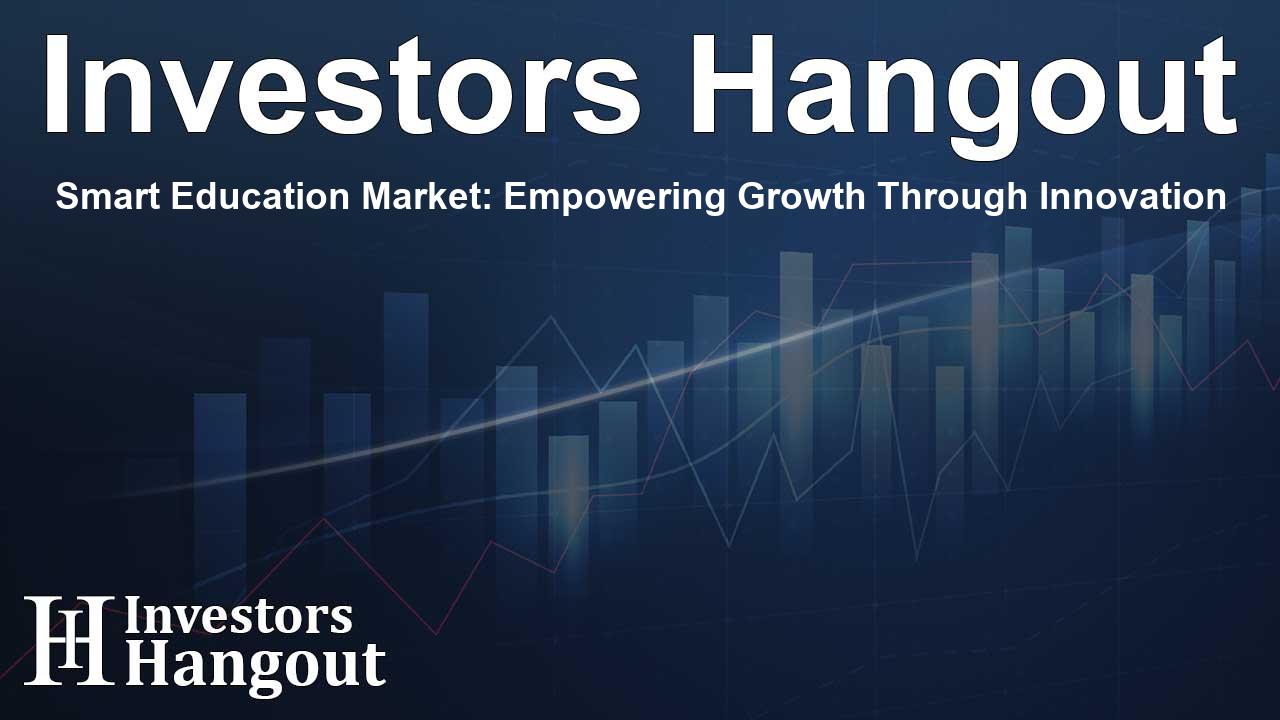Smart Education Market: Empowering Growth Through Innovation

Smart Education Market Growth Overview
The global smart education market is on the rise, with predictions estimating a growth of USD 486.2 billion between 2024 and 2028. This expansion reflects an impressive compound annual growth rate (CAGR) of 20.44%, driven primarily by advancements in artificial intelligence and an increasing emphasis on e-learning. The focus on innovative product development is at the forefront of this transformation, as key players invest in new technologies and solutions that reshape the education sector.
Market Drivers and Key Players
Several prominent companies are leading the charge in the smart education space, including Adobe Inc., Blackboard Inc., and Cisco Systems Inc. These organizations are enhancing the educational landscape through cutting-edge solutions like Adobe's updates to their creative software suite, which enriches online learning experiences. The introduction of versatile learning platforms by companies such as D2L Inc and Instructure Holdings Inc further caters to the evolving needs of students and educators.
AI's Transformational Role
Artificial Intelligence is a key driver in this market evolution. It enhances interactions within virtual classrooms, providing personalized learning experiences that cater to individual student needs. AI-powered solutions streamline administrative tasks and improve engagement through tailored educational materials, making learning more accessible and efficient.
Trends Shaping the Future of Learning
Blended learning has emerged as a significant trend within the smart education market. This approach combines traditional classroom instruction with digital learning strategies, such as online exercises and discussions. It enables students to engage deeply with content and collaborate with peers effectively. Furthermore, corporate training is increasingly utilizing these methods, as businesses seek to enhance employee development through cost-effective training solutions.
The Shift Towards Digital Learning
As educational institutions adapt to a digital landscape, technologies like Learning Management Systems (LMS) and virtual classrooms are becoming more prevalent. These tools facilitate the recording of lectures and enable personalized doubt-solving sessions, ensuring students receive the support they need. This shift not only benefits students but also helps educators scale their teaching efforts efficiently.
Challenges Facing Smart Education Adoption
Despite the opportunities the smart education market presents, several challenges must be addressed. Budgetary constraints in developing regions inhibit the implementation and maintenance of necessary equipment, posing a barrier to adopting advanced learning systems. Schools experiencing financial limitations may not be able to invest in the technologies needed to foster smart education environments.
Importance of Government Initiatives
Government involvement is crucial for integrating smart educational tools into public institutions, often at subsidized rates, to alleviate some financial burdens. Without such support, many schools resort to traditional teaching methods, limiting the potential growth of digital learning in regions that would benefit most.
Segment Analysis: End-Users and Geography
The smart education market encompasses a diverse range of end-users and components. Key segments include academic institutions, who leverage technology to enhance the learning experience, and corporate environments, which utilize smart education for employee training and development. Geographically, the market spans across North America, Europe, Asia Pacific, South America, and the Middle East and Africa, each presenting unique opportunities for growth.
Future Outlook and Research Insights
As digitization continues to transform the educational landscape, research and analysis will play an essential role in identifying future opportunities. The smart education market is expected to thrive as institutions recognize the need for AI-driven solutions and blended learning approaches to remain competitive and effective.
Frequently Asked Questions
What is the projected growth of the smart education market?
The smart education market is expected to grow by USD 486.2 billion between 2024 and 2028.
Which companies are leading the smart education market?
Major players include Adobe Inc., Blackboard Inc., Cengage Learning Inc., and Cisco Systems Inc.
How is AI impacting the smart education market?
AI enhances learning experiences through personalization, engagement, and efficient administrative tasks.
What challenges does the smart education market face?
Budget constraints in emerging markets and the need for government support are primary challenges.
What are the key trends in smart education?
Blended learning and the adoption of digital tools like Learning Management Systems are significant trends shaping the future.
About Investors Hangout
Investors Hangout is a leading online stock forum for financial discussion and learning, offering a wide range of free tools and resources. It draws in traders of all levels, who exchange market knowledge, investigate trading tactics, and keep an eye on industry developments in real time. Featuring financial articles, stock message boards, quotes, charts, company profiles, and live news updates. Through cooperative learning and a wealth of informational resources, it helps users from novices creating their first portfolios to experts honing their techniques. Join Investors Hangout today: https://investorshangout.com/
Disclaimer: The content of this article is solely for general informational purposes only; it does not represent legal, financial, or investment advice. Investors Hangout does not offer financial advice; the author is not a licensed financial advisor. Consult a qualified advisor before making any financial or investment decisions based on this article. The author's interpretation of publicly available data shapes the opinions presented here; as a result, they should not be taken as advice to purchase, sell, or hold any securities mentioned or any other investments. The author does not guarantee the accuracy, completeness, or timeliness of any material, providing it "as is." Information and market conditions may change; past performance is not indicative of future outcomes. If any of the material offered here is inaccurate, please contact us for corrections.